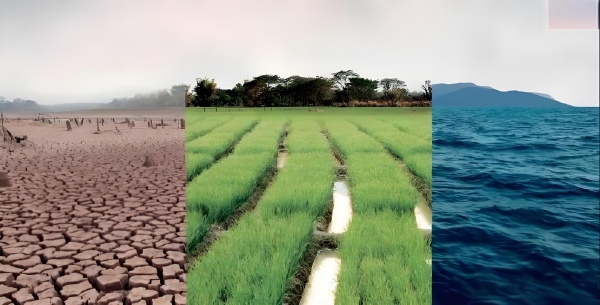Climate Change Impacts on China's Agriculture
Recently, the high temperature and severe drought in Henan Province, China's main grain-producing area, have attracted much attention. In China, a country with a large population, food security has been facing several challenges, which are likely to be worsened due to climate change.

Recently, the high temperature and severe drought in Henan Province, China's main grain-producing area, have attracted much attention. In China, a country with a large population, food security has been facing several challenges, which are likely to be worsened due to climate change.
According to statistics, at present, there are 3.23 million Mu farmland not suitable for sowing in Henan due to severe drought. The cultivated land is arid to the point of cracking, and there was no effective rainfall for many days, what worse, the groundwater was not enough for irrigation.
Henan is a microcosm of how China is suffering from extreme weather events including intense heat waves, droughts and floods. China is still a developing country and thus vulnerable to the adverse effects of climate change, with its agricultural sector being especially vulnerable to extreme weather events.
High temperatures have not only had a significant impact on people's lives and health but also created problems for agriculture, water sources and urban infrastructure.
Li Tianwei, director of the ministry's environmental emergency response office, highlighted the ongoing threat."China, like many other nations, is experiencing more frequent extreme weather events due to global warming," Li said.
Recently, the Ministry of Finance and the Ministry of Agriculture and Rural Affairs announced allocation of 443 million yuan ($61 million) to seven provinces in northern China, including Henan, Hebei, Shandong, Shanxi, Jiangsu and Anhui, in response to the drought-induced damage to crops caused by prolonged heat and insufficient rainfall.
The funds will be primarily used to provide subsidies for agricultural drought-resistant measures such as watering, soil moisture replenishment, crop conversion and additional fertilization to ensure the successful completion of the critical summer sowing stage.
To set up pilot zones for climate-smart agriculture, it is essential to strengthen synergies with climate risk management and optimize water resources management to ensure low-carbon development and energy security.
The Chinese government attaches great importance to the adaptation of agriculture to climate change, and has taken a series of effective measures to achieve positive results in improving the resilience of agriculture and effectively preventing the adverse effects and risks of climate change. In terms of national policies and measures, the National Strategy for Adaptation to Climate Change 2035 was released in 2022, which clarified measures to strengthen the agricultural disaster response and mitigation work system, enhance the climate resilience of the agricultural ecosystem, and establish a food security system to adapt to climate change.